Rossland’s Founder: Ross Thompson
When Ross Thompson learned of the gold-rich Red Mountain, he travelled to the Trail Creek district determined to make a fortune. By 1897, Thompson’s ambition had resulted in one of the foremost mining cities in British Columbia.
Early Life
Ross Thompson was born in Bruce County, Ontario on January 29, 1866. Thompson was a “farmer’s boy,” growing up on a modest family farm with his brothers and sisters. His father, Gaddis Thompson, was a farmer and his mother, Mary Ann Thompson (née Doran) was a homemaker. As a child, Thompson moved to Portage la Prairie, Manitoba, where he remained with his family until he was eighteen. As a young adult, Thompson began travelling within Canada and the United States. In 1889, he settled briefly in Vancouver, BC before travelling to the United States and spending time in Seattle, Washington, as well as Butte and Great Falls, Montana. He eventually arrived in Bonners Ferry, Idaho, where he worked as a foreman at the local sawmill in the summer of 1891. Thompson decided to travel back to Canada in the fall of the same year. He arrived in Nelson, BC, where he had hoped to make a stake on Toad Mountain. Upon his arrival, however, Thompson found that every available prospect had been claimed. This led him to the Trail Creek district where the Le Roi, War Eagle, and Centre Star mines had been established.
Founding the City of Rossland
Upon arriving in the Trail Creek district, Thompson secured employment at the Centre Star Mine. His time at the Centre Star was brief, however, as he saw greater potential in the land of the Trail Creek district rather than the mines. Thompson believed that a great fortune could be made as a landowner and hastily filed a pre-emption on 160 acres of land for a townsite. At the time, pre-emption was used in BC to acquire Crown land that had not been surveyed. It allowed for individuals to claim a temporary title of land for settlement or agricultural purposes until it could be surveyed by the government. Thompson filed his pre-emption in January 1892 and built a log cabin in May of the same year. Known as Thompson’s “fortress,” the cabin was the first home in the camp and became a gathering place for miners. It was located near the southeast corner of what is now Columbia Avenue and Spokane Street. The cabin was also the location where the very first editions of The Rossland Miner were printed starting in March 1895.
In May 1894, Thompson received a Crown grant for his pre-emption at a cost of $1.00 per acre. Shortly after, Thompson decided to trade interest in the townsite with John R. Cook and together they negotiated with J.F. Ritchie, a land surveyor from Nelson, to survey and plot the land. It was decided to name the townsite Thompson, however, that was rejected by the postal authorities on the basis that there were already towns with the same or similar names. In order to still honour Thompson, Rossland was chosen instead. Thompson sold lots to prospectors and miners for around $30.00-$50.00 per lot and in other instances, gave them away to those who would build upon them. When Rossland grew in prominence in 1897 and 1898, lots were selling for significantly more. The lot on which the Bank of Montreal is built, for example, was sold for $30,000 (approximately $900,000 in 2022). As Rossland became desirable amongst prospectors and mining men, the population grew substantially. When the city was officially incorporated on March 18, 1897, the population was estimated to be 7,000 to 8,000.
Pronounced Ro(ss)land or Ro(zz)land? Tourism Rossland asks the community.
Named after Ross Thompson - definitely Ross-land (hard s)!
Activities in Rossland
Unsurprisingly, as the town’s founder, Thompson was a very popular figure in Rossland. Despite this, however, he was reported to have remained humble and his friends addressed him merely as ‘Ross.’ After Rossland’s incorporation, Thompson continued to remain active in the town’s affairs. He established considerable connections in Rossland and was also rumoured to have contacts in various organizations across the province. In 1898, Thompson played a role in ousting Rossland’s first mayor - Robert Scott. Scott had grown increasingly unpopular and was challenged by Howard Wallace for the mayorship. Thompson ran on Wallace’s ticket as an alderman and won. On January 17, 1898, Wallace became Rossland’s second mayor and Thompson joined him as an alderman for the town’s second ward. Thompson was a member of the Fire, Water, & Light Committee. He was re-elected as an alderman on January 12, 1899.
Thompson married Katherine Alta Watson on August 24, 1897. Ms. Watson was the daughter of John and Kate Watson of Rossland. The wedding was held at the Pacific Hotel, with the ceremony performed by Reverend Henry Irwin (Father Pat) of the Episcopal Church. After the wedding, the couple left by train for a three-week honeymoon on the BC coast. Upon their return to Rossland, they resided in Thompson’s beautiful, recently-constructed Victorian home. This home is still standing today on Union Avenue in what is now known as Lower Rossland.
Later Life
In 1904, Thompson, and presumably his wife, left Rossland for the goldfields of Colorado and Nevada in search of further enterprises. Although it is surprising that Thompson left the town so soon after founding it, his ambition could not keep him sedentary for long. Unfortunately, little is known about Thompson’s life after leaving Rossland. At some point, however, Thompson and his wife divorced. On January 6, 1917, Katherine married John R. Jewett in Seattle, Washington.
Cominco Magazine: Ross Thompson in Rossland, August 1946.
Thompson visited Rossland in August-September 1946, the first time being back in the town since he left in 1904. It was Warren Crowe, customs officer at Waneta, who suggested that the Rossland Junior Board of Trade arrange a visit for Thompson. During the visit, Thompson was given a tour of the Consolidated Mining and Smelting Company plants in Trail and honoured with a banquet in Rossland. He was then shown around the Kootenays, visiting Nelson, New Denver, Sandon, and Kaslo, meeting old acquaintances along the way. Thompson ended his trip with an address over the airways of CJAT, where he described the early days of Rossland.
Aside from Thompson’s trip to Rossland in 1946, it is unknown how many trips, if any, he made back to Rossland. Having moved back to Canada and settled in Vancouver, BC by 1929, he remained a resident of Vancouver until his death due to pneumonia on March 18, 1951. A funeral, arranged by the British Columbia & Yukon Chamber of Mines, was subsequently held for Thompson in Vancouver. Thereafter, a public memorial was held for Thompson in Rossland on August 1, 1951. His ashes were interned at the Sunnyside Cemetery and on behalf of the City of Rossland, a wreath was placed on his grave. Due to the fact that little is known about the Sunnyside Cemetery and the marker was not permanent, it is unknown where Thompson’s gravesite was located. The cemetery no longer exists and many of the remains were transported to the Columbia Cemetery. Thompson’s ashes, however, are not accounted for in the Columbia Cemetery records.
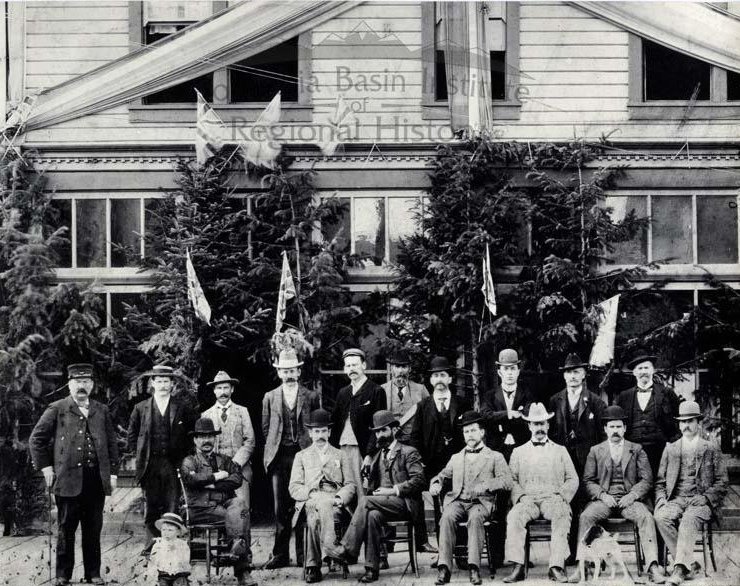
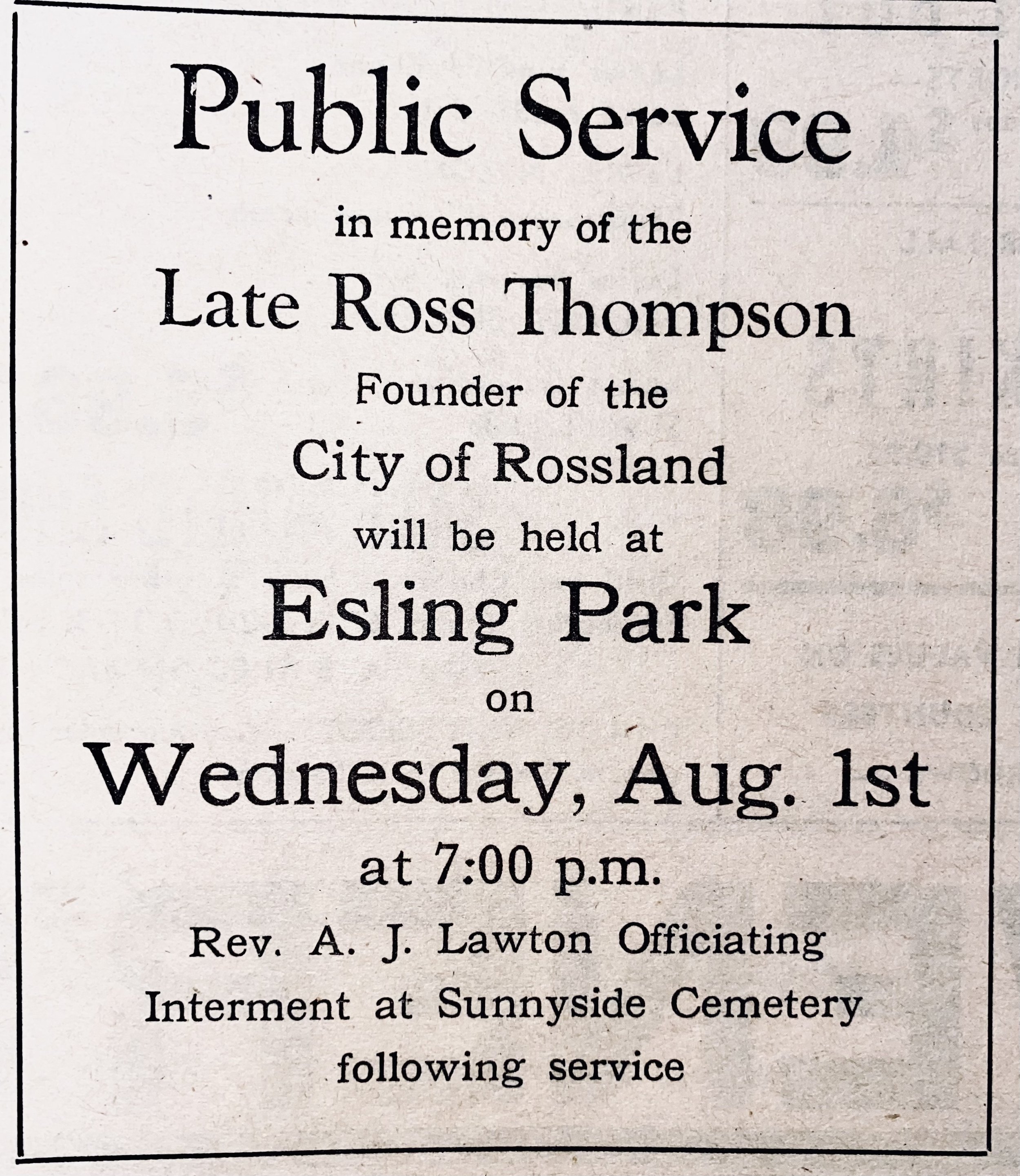
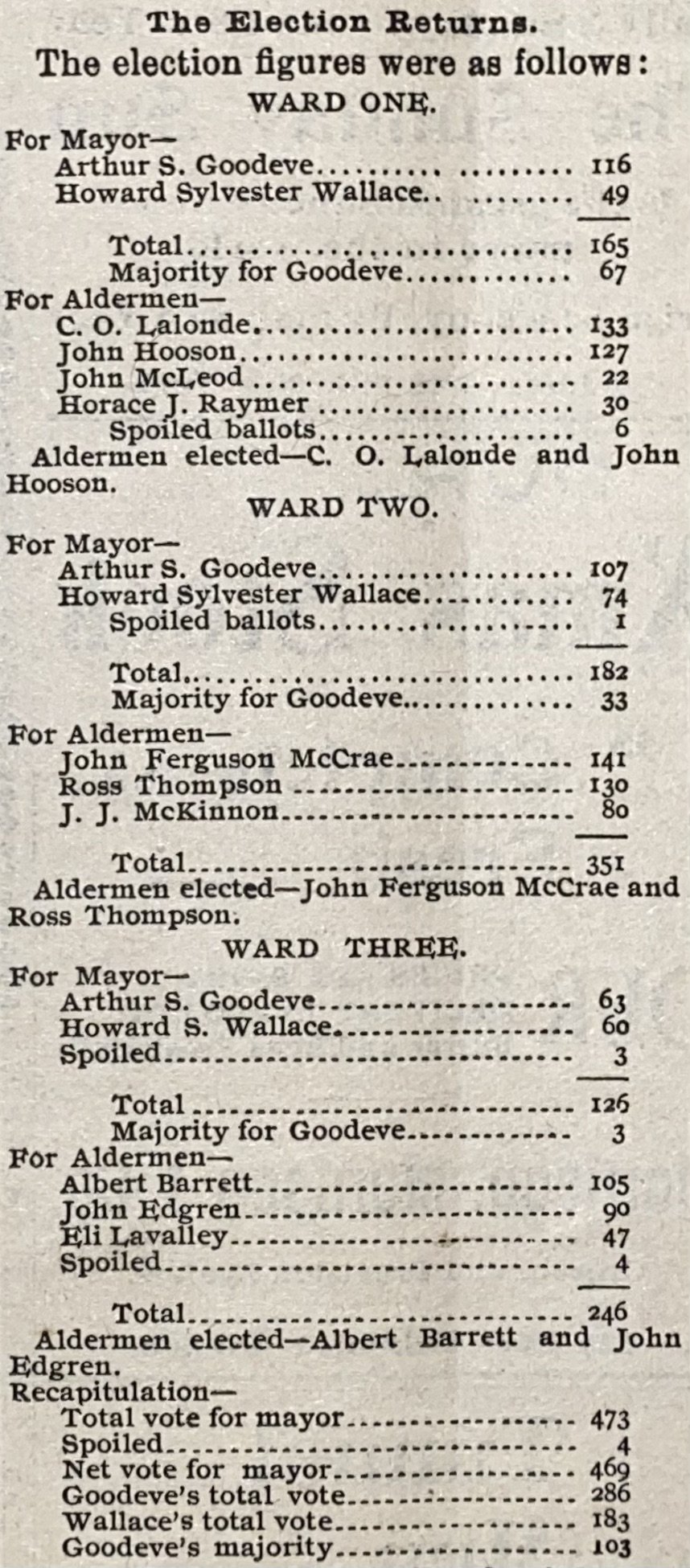
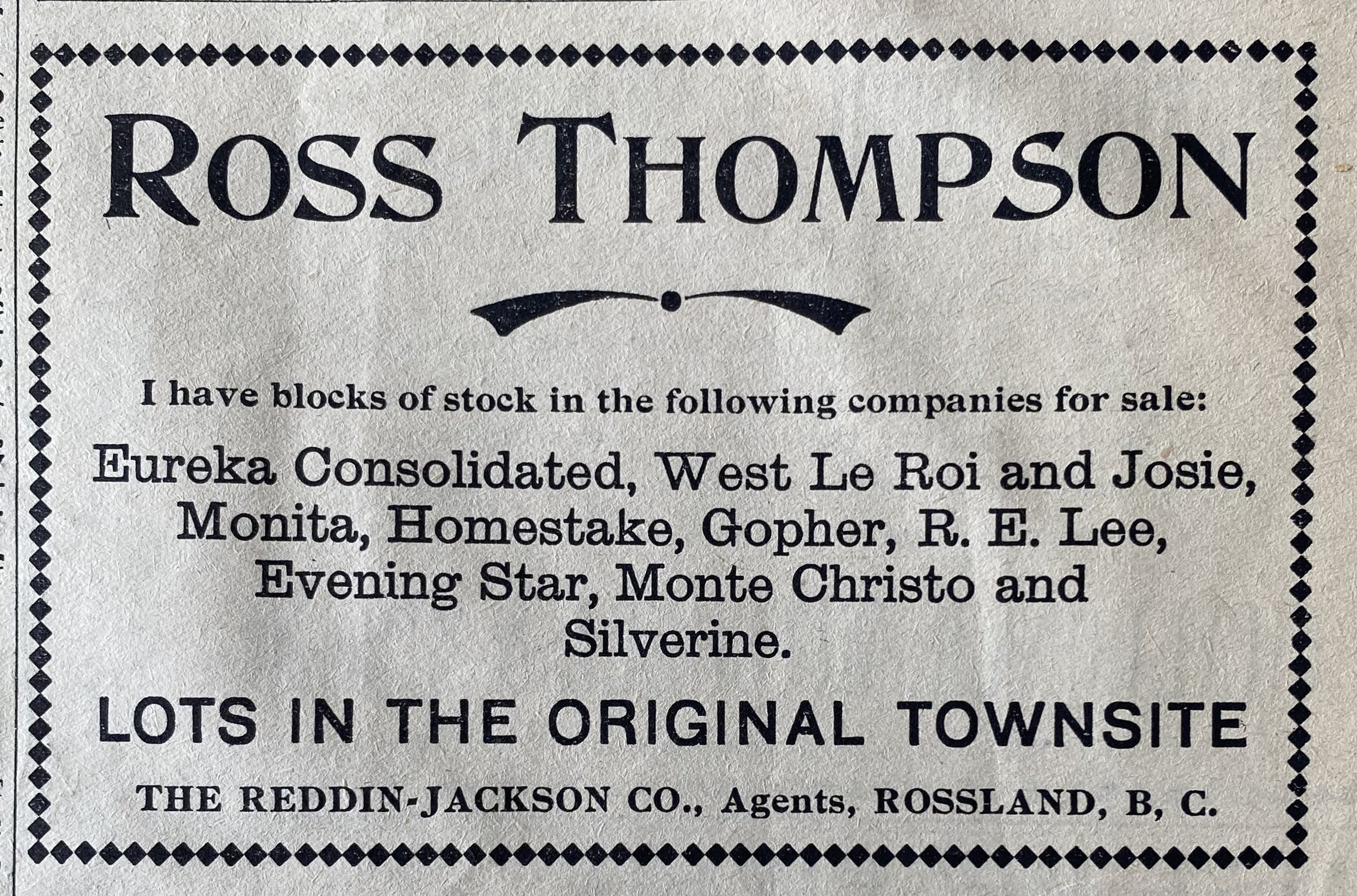
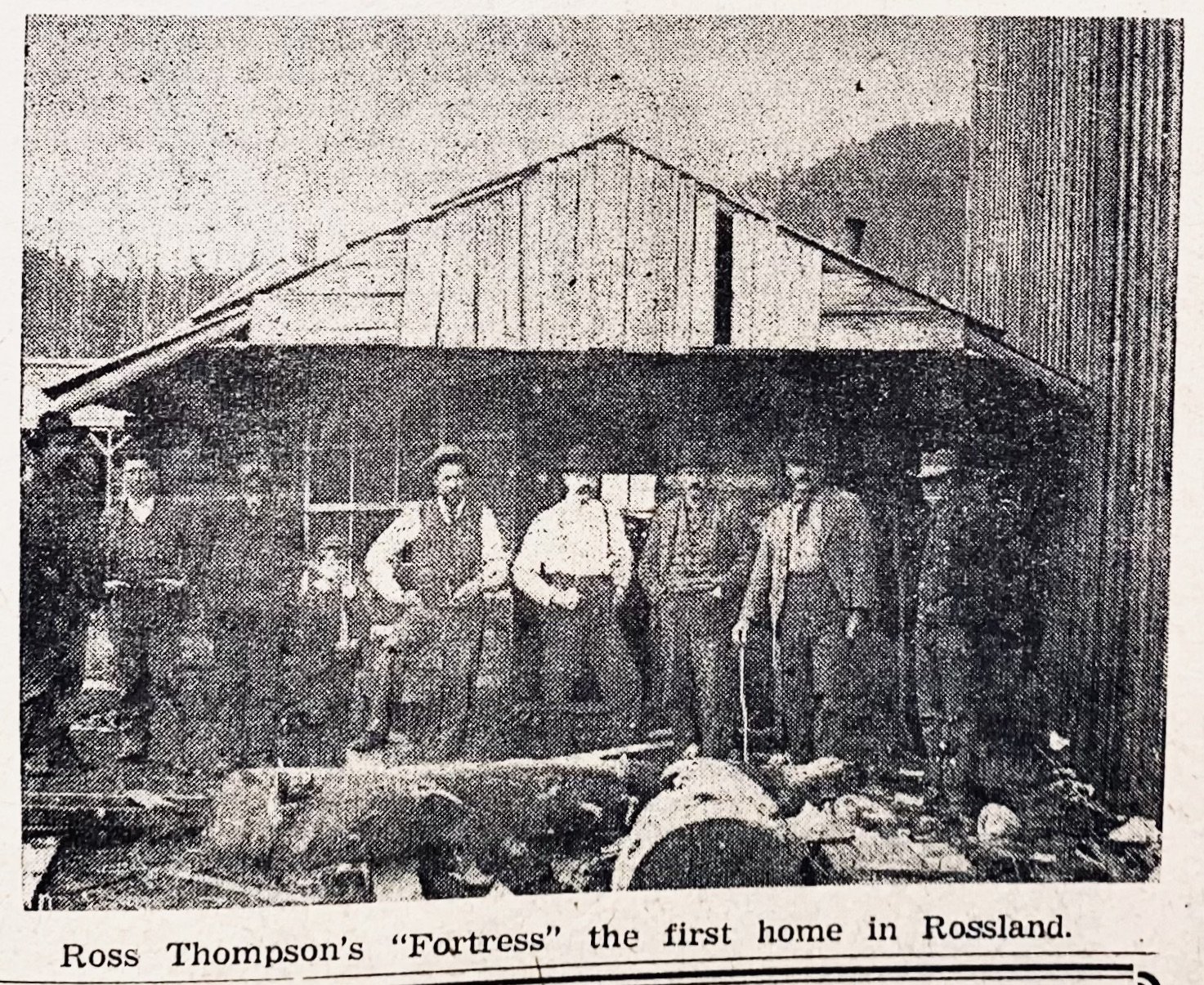
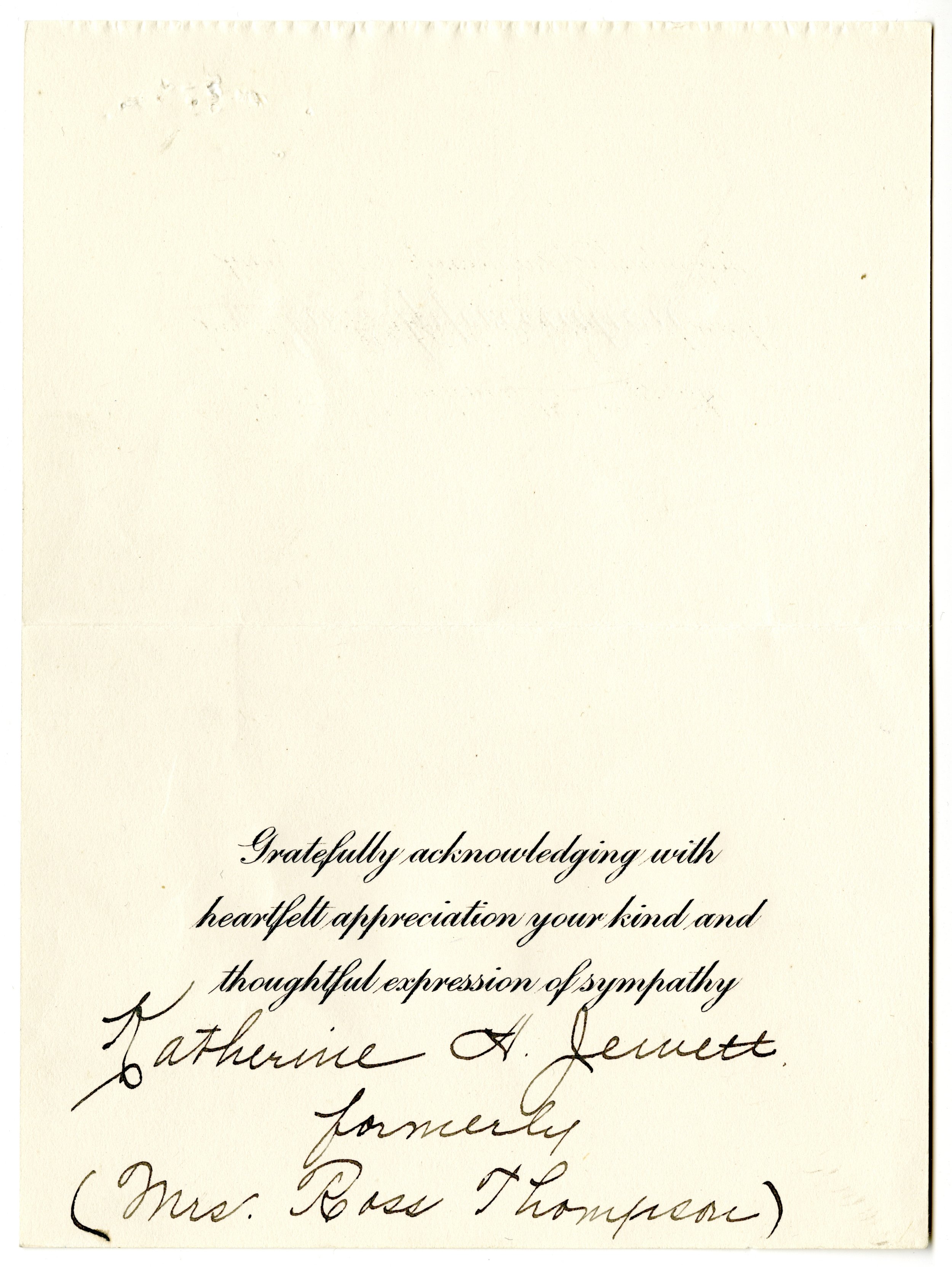

Sources:
City of Rossland Fonds, MS 55. Collection of the Rossland Museum & Discovery Centre.
Cominco Magazine. “Ross Thompson Comes Home Again.” Cominco Magazine, November 1946.
Cottingham, Mollie Esther. 1947. “A History of the West Kootenay District in British Columbia.” Retrospective Theses and Dissertations, 1919-2007. The University of British Columbia.
Library and Archives Canada. Census of 1861; Census of 1901.
Kingsmill, Harold. First History of Rossland B.C. Rossland: Stunden & Perine, 1897.
Royal BC Museum. Ross Thompson.
Royal BC Museum. Quick Guide to Pre-Emption and Homestead Records.
Rossland Board of Trade. Rossland in 1898. Toronto: Grip Printing and Publishing Company, 1898.
Rossland Miner. Collection of the Rossland Museum & Discovery Centre.
Rossland Miner Historical Edition. Collection of the Rossland Museum & Discovery Centre.
Rossland Miner Limited. Rossland: The Golden City. Rossland: Rossland Miner Limited, 1949.
Washington State Digital Archives. Marriage Records.
Continue Indoor Tour:
Contribute your own memories/experiences of notable Rossland individuals:
The form below will email us your message. If you prefer to speak to us directly or have other questions or comments about this page, please call (250) 362-7722 or email the archives directly at archives@ rosslandmuseum.ca.



